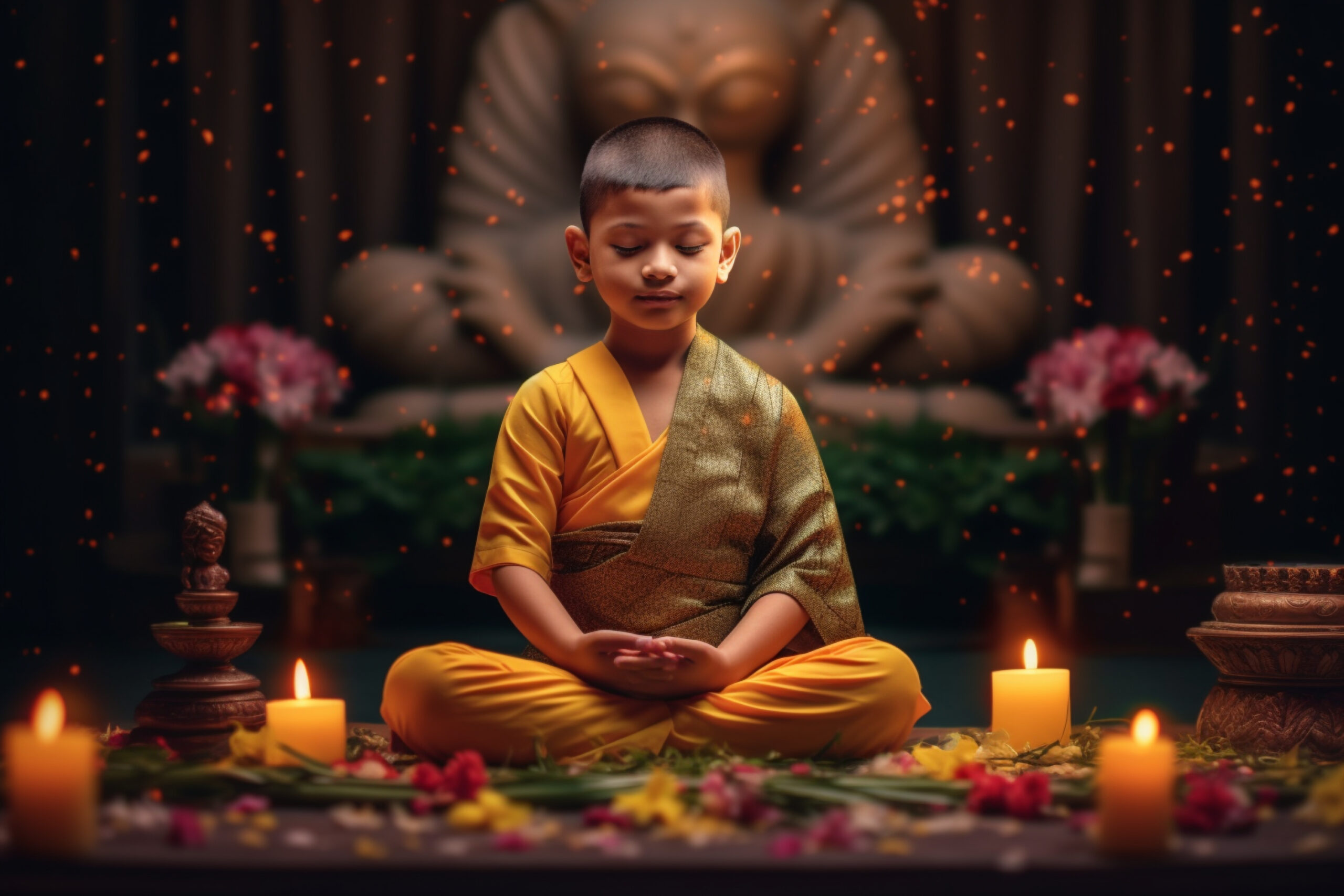Meditation for Beginners: Meditation is an ancient practice that has gained widespread popularity in recent years. It offers a multitude of physical, mental, and emotional benefits. However, for beginners, meditation can seem daunting and challenging. This comprehensive guide will provide you with a step-by-step approach to meditation, along with valuable tips and insights to help you embark on your meditation journey with confidence.
Table of Contents
Meditation for Beginners: Top 11 Helpful Tips
Introduction
Understanding Meditation
Meditation is an ancient practice with roots that trace back thousands of years to civilizations like India and China. It involves training the mind to focus and redirect thoughts, ultimately leading to an improved state of mental clarity and emotional well-being.
For beginners, meditation can seem mysterious and challenging, but it’s essential to remember that meditation is not about achieving a specific outcome. It’s a journey of self-discovery and inner exploration. In this article, we will explore various meditation techniques and provide tips to help beginners embark on their meditation journey with confidence.
Benefits of Meditation for Beginners
Before diving into the intricacies of meditation, it’s crucial to understand the potential benefits it can offer, especially to beginners. Here are some of the advantages of incorporating meditation into your daily life:
- Stress Reduction: Meditation is a powerful tool for managing stress and anxiety. It helps calm the mind and promotes relaxation.
- Improved Concentration: Regular meditation practice enhances your ability to concentrate and focus on tasks, which is particularly beneficial for students and professionals.
- Enhanced Self-Awareness: Meditation allows you to become more in tune with your thoughts and emotions, leading to better self-understanding.
- Better Emotional Resilience: It equips you with the skills to handle challenging emotions and situations more effectively.
- Quality Sleep: Meditation can improve sleep quality and help with insomnia, ensuring you wake up feeling refreshed.
- Increased Creativity: Many artists and creatives use meditation to tap into their creativity and find inspiration.
- Mind-Body Connection: Meditation fosters a stronger connection between your mind and body, promoting overall well-being.
Now that we understand the benefits let’s move on to the practical aspects of getting started with meditation.
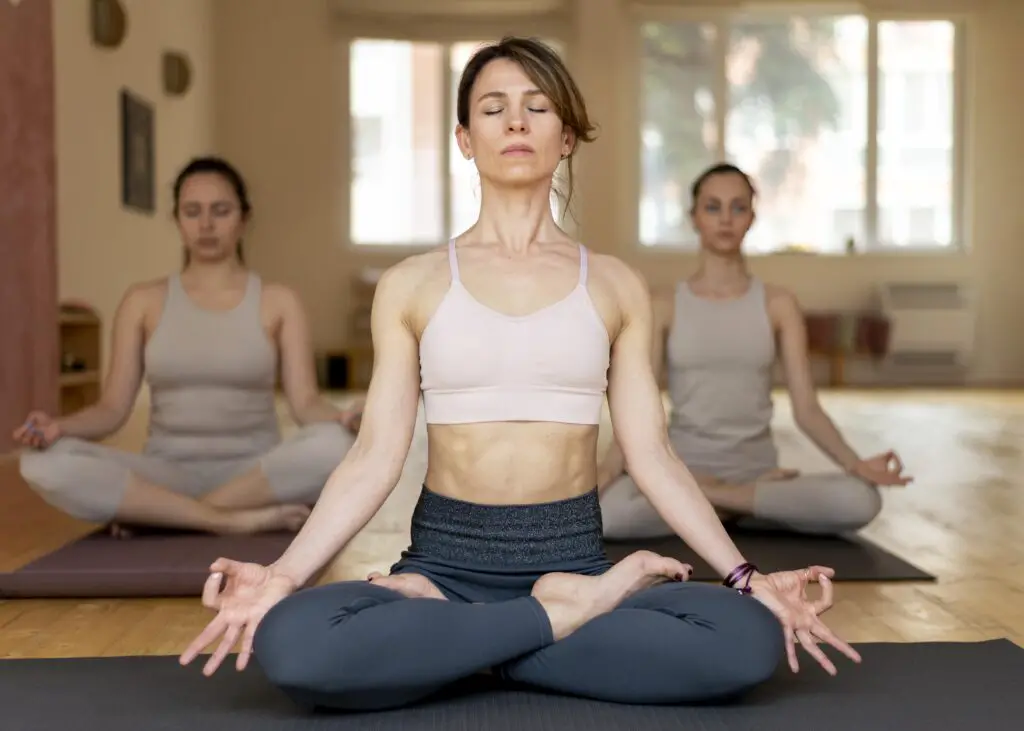
Meditation for Beginners: Top 11 Helpful Tips
Setting the Stage
Creating a Sacred Space
One of the first steps in establishing a meditation practice is creating a conducive environment. Your meditation space should be comfortable, peaceful, and free from distractions. Here’s how to create a sacred space:
- Choose a Quiet Location: Find a place in your home or outdoors where you won’t be disturbed. This could be a corner of a room, a garden, or a park.
- Clear Clutter: Remove any clutter or unnecessary items from your chosen space. A clean and tidy environment can have a calming effect.
- Add Inspirational Elements: Consider adding elements that inspire you, such as a vase of fresh flowers, a small fountain, or a piece of artwork.
- Comfortable Seating: Ensure you have a comfortable chair, cushion, or mat to sit on during meditation. It’s essential to be at ease.
- Soft Lighting: If possible, use soft, natural lighting or candles to create a soothing ambiance.
Choosing the Right Time
The timing of your meditation practice can significantly impact its effectiveness. While there is no universal “best” time to meditate, here are some considerations:
- Morning Meditation: Many people find that meditating in the morning sets a positive tone for the day. It can help you start your day with clarity and focus.
- Evening Meditation: Evening meditation can be a great way to unwind and de-stress after a long day. It can also improve the quality of your sleep.
- Lunchtime Break: If your schedule allows, consider a short meditation break during lunchtime to re-energize and refocus.
- Consistency: Regardless of the time you choose, consistency is key. Attempt to meditate consistently at the same daily time to create a regular practice.
Comfortable Seating
Finding the right seating arrangement is essential for a comfortable meditation experience. Your choice of seating can vary depending on your personal preference, but here are some options:
- Cushion or Pillow: Many practitioners prefer sitting on a cushion or pillow on the floor. This promotes proper posture and comfort.
- Chair: Sitting in a straight-backed chair is a suitable option, especially if sitting on the floor is uncomfortable for you.
- Bench: Meditation benches are designed to support good posture and can be an excellent choice for those with back or knee issues.
- Yoga Mat: If you prefer a more relaxed posture, you can use a yoga mat to sit or lie down during meditation.
Posture and Alignment
Maintaining the right posture is crucial during meditation to ensure physical comfort and energy flow. Here’s how to achieve proper posture:
- Sit Upright: Whether on a chair, cushion, or mat, sit with your back straight and your shoulders relaxed.
- Cross-Legged Position: If sitting on the floor, cross your legs comfortably. Use a cushion to elevate your hips if needed.
- Hands: Place your hands on your lap, with your palms facing up or down, in a relaxed and comfortable position.
- Head and Neck: Tilt your chin slightly downward to align your head and neck with your spine.
- Eyes: Close your eyes gently, or if you prefer, leave them open with a soft gaze on a spot in front of you.
Remember that maintaining good posture might take some practice, especially if you’re not used to sitting for extended periods. Over time, it will become more natural.
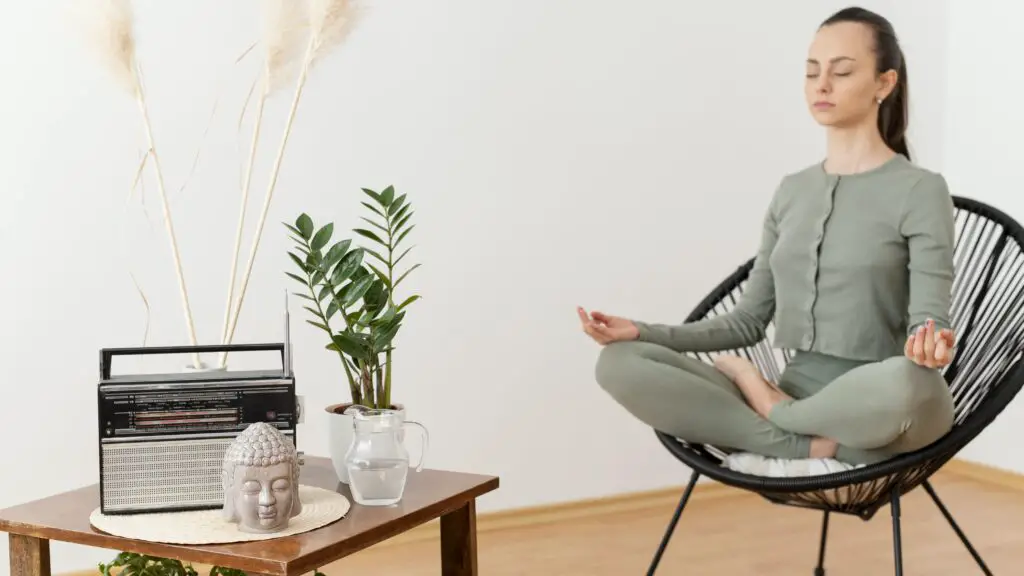
Meditation for Beginners: Top 11 Helpful Tips
Breathing Basics
The Importance of Breath
Breath is a fundamental aspect of meditation. It serves as an anchor for your awareness, helping you stay present in the moment. Before we explore specific breathing techniques, let’s understand the importance of breath in meditation.
Breath is the bridge that connects your body and mind. It’s a constant and accessible sensation that you can focus on during meditation. By paying attention to your breath, you can achieve several benefits:
- Calming Effect: Deep and mindful breathing activates your body’s relaxation response, reducing stress and anxiety.
- Enhanced Focus: Concentrating on your breath enhances your ability to stay present and avoid distractions.
- Mind-Body Connection: Breath awareness strengthens the connection between your physical sensations and mental state.
- Emotional Regulation: Controlled breathing can help regulate emotions and promote emotional well-being.
Now, let’s delve into specific breathing techniques that beginners can use in meditation.
Diaphragmatic Breathing
Diaphragmatic breathing, also known as abdominal or belly breathing, is a foundational technique for beginners. It involves using your diaphragm to inhale deeply and exhale fully. Here’s how to practice diaphragmatic breathing:
- Find a Comfortable Position: Sit or lie down in a relaxed position, with one hand on your chest and the other on your abdomen.
- Inhale Slowly: Breathe in slowly through your nose, allowing your abdomen to rise as you fill your lungs with air. Your chest should remain relatively still.
- Exhale Completely: Exhale slowly and completely through your mouth or nose, letting your abdomen fall as you release the air.
- Focus on the Sensation: Pay close attention to the sensation of your breath moving in and out of your body. Experience the gentle expansion and contraction of your abdomen with every breath.
- Repeat: Continue this deep, diaphragmatic breathing for a few minutes, gradually extending the duration as you become more comfortable.
Diaphragmatic breathing is an excellent way to relax your body and mind, making it an ideal starting point for meditation.
Mindful Breathing
Mindful breathing is a meditation technique that involves observing your breath without trying to control it. It encourages a non-judgmental awareness of your breath as it naturally occurs. Here’s how to practice mindful breathing:
- Sit Comfortably: Find a comfortable meditation posture, and close your eyes if you wish.
- Focus on Your Breath: Direct your attention to your breath without attempting to change its rhythm or depth.
- Observe Sensations: Notice the sensations of your breath as it enters and exits your nostrils or the rising and falling of your abdomen.
- Stay Present: Whenever your mind wanders to other thoughts, gently redirect your focus back to your breath. There’s no need to judge or criticize yourself for drifting thoughts; it’s a natural part of meditation.
- Continue: Practice mindful breathing for the duration of your meditation session, whether it’s a few minutes or longer.
Mindful breathing is a foundational practice that cultivates awareness and presence. It’s an excellent choice for beginners as it requires no special skills or techniques—only your focused attention.
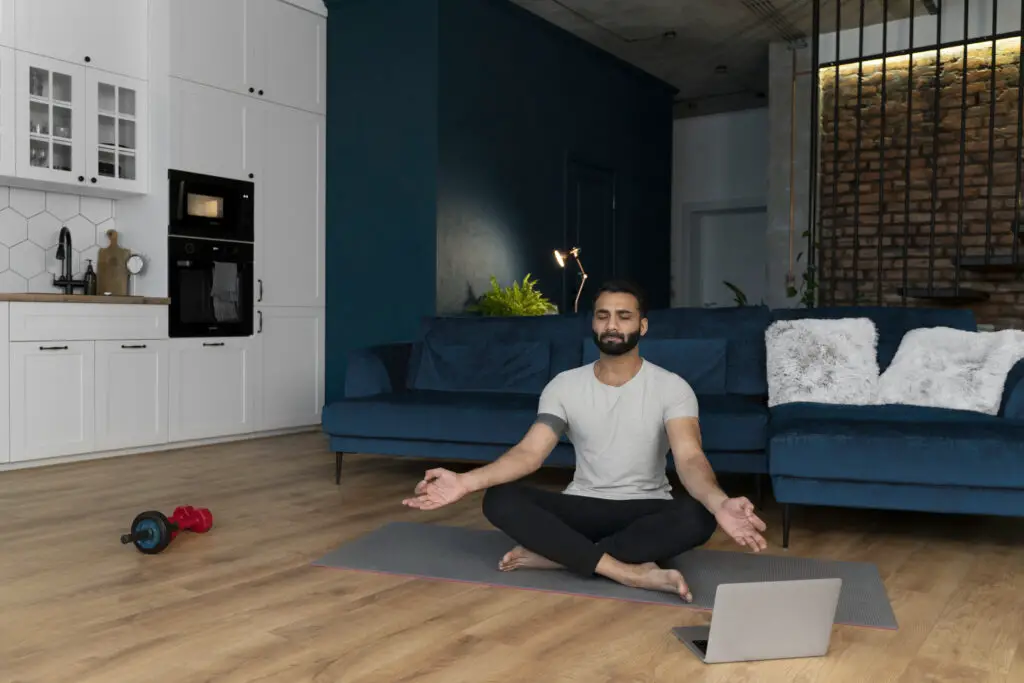
Meditation for Beginners: Top 11 Helpful Tips
Mindfulness Meditation
The Essence of Mindfulness
Mindfulness meditation is a widely practiced form of meditation that focuses on cultivating present-moment awareness. It involves observing your thoughts, emotions, and bodily sensations without judgment. Here’s how to get started with mindfulness meditation:
- Find a Quiet Space: Begin by choosing a quiet place for your meditation practice, free from distractions.
- Sit Comfortably: Adopt a comfortable posture, either on a cushion, chair, or mat, ensuring your back is straight.
- Focus on Breath: Begin by focusing your attention on your breath. Pay attention to the feeling of the breath as it enters and exits through your nostrils.
- Observe Thoughts: As thoughts arise, observe them without getting caught up in their content. Picture your thoughts as transient clouds drifting through the vast sky of your mind.
- Non-Judgmental Awareness: Practice non-judgmental awareness of your thoughts and emotions. There are no “good” or “bad” thoughts—only observations.
- Return to Breath: When you notice your mind has wandered, gently bring your focus back to your breath.
Body Scan Meditation
Body scan meditation is another mindfulness practice that involves directing your attention systematically through different parts of your body. It’s an excellent way to cultivate body awareness and release tension. Here’s how to do a body scan meditation:
- Lie Down: Find a comfortable and quiet place to lie down on your back, with your arms at your sides and your palms facing up.
- Begin at the Feet: Start by focusing your attention on your feet. Notice any sensations, tension, or warmth in this area.
- Move Upwards: Gradually shift your attention to your ankles, calves, knees, thighs, and so on, moving up your body.
- Observe Sensations: As you scan each body part, observe any sensations or areas of tension. If you notice tension, visualize it melting away as you exhale.
- Stay Present: Maintain your awareness on each body part for a few breaths before moving on to the next. The goal is to be fully present in your body.
- Finish at the Head: Complete the body scan by focusing on your head and face. Notice any facial muscles that might be tense, and allow them to relax.
Breath Awareness Meditation
Breath awareness meditation combines elements of mindfulness with a focus on the breath. It’s a versatile practice that can help you cultivate concentration and inner peace. Here’s how to practice breath awareness meditation:
- Choose a Comfortable Posture: Sit comfortably with your back straight and your hands resting on your lap.
- Focus on the Breath: Begin by bringing your attention to your breath. Notice the sensation of the breath as it enters and exits your nostrils.
- Counting Breath: To help maintain focus, you can count each breath cycle. Inhale and exhale, counting one, then two, and so on. When you reach ten, start again from one.
- Observe Without Control: Allow your breath to flow naturally. You’re not trying to change your breath but simply observing it.
- Mindful Breathing: If your mind wanders, gently bring it back to your breath. This process of redirecting your focus is an essential aspect of meditation.
- Duration: Start with a few minutes of breath awareness meditation and gradually extend the duration as you become more comfortable.
Mindfulness meditation is known for its ability to reduce stress, improve emotional regulation, and enhance overall well-being. It’s a valuable practice for beginners seeking inner calm and mental clarity.
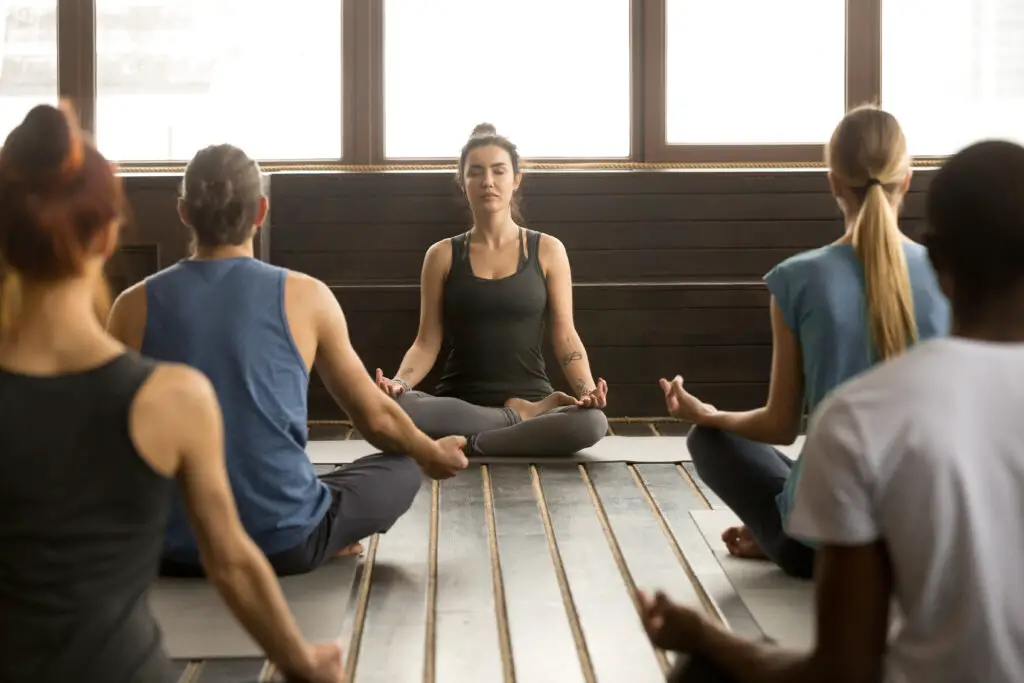
Meditation for Beginners: Top 11 Helpful Tips
Guided Meditation
Finding a Suitable Guide
Guided meditation involves following the instructions and guidance of a meditation teacher or recorded meditation. It’s an excellent option for beginners who may find it challenging to meditate independently. Here’s how to find a suitable guide:
- Online Resources: There are numerous websites, apps, and YouTube channels that offer guided meditations. Look for reputable sources with experienced instructors.
- Meditation Apps: Consider using meditation apps like Headspace, Calm, or Insight Timer, which provide a wide variety of guided meditations for different purposes.
- Local Classes: Check if there are meditation classes or workshops available in your area. These classes often include guided sessions led by experienced teachers.
- Book Recommendations: Books on meditation often include guided meditation scripts or recommendations for audio resources.
Guided Visualization
Guided visualization is a type of meditation where you’re led through a mental journey or scenario. It can be highly relaxing and is often used for stress reduction and achieving specific goals. Here’s how to practice guided visualization:
- Choose a Guided Meditation: Find a guided visualization that resonates with your goals or needs. It could be about relaxation, self-confidence, or any other topic.
- Get Comfortable: Find a quiet space, sit or lie down comfortably, and close your eyes.
- Follow the Guide: Listen to the guided meditation, following the instructions provided. The guide may ask you to imagine a peaceful place or guide you through a scenario.
- Involve Your Senses: While visualizing, activate your senses. Imagine the sights, sounds, smells, and sensations of the scenario as vividly as possible.
- Stay Relaxed: Throughout the visualization, maintain a state of relaxation. If your mind starts to wander, gently bring your focus back to the guide’s voice.
Guided visualizations can be a powerful tool for stress relief, personal growth, and enhancing creativity. They are particularly suitable for those who enjoy using their imagination as a form of meditation.
Mantra Meditation
Mantra meditation involves the repetition of a specific word, phrase, or sound (mantra) to focus the mind and induce a meditative state. Mantras can be chanted silently or audibly. Here’s how to practice mantra meditation:
- Choose a Mantra: Choose a mantra that deeply connects with you. It could be a traditional Sanskrit mantra like “Om,” a simple word like “peace,” or any phrase that holds personal meaning.
- Sit Comfortably: Find a comfortable meditation posture, either on a chair or cushion.
- Repeat the Mantra: Begin repeating the mantra either silently or audibly. You can sync the repetition with your breath, inhaling as you silently say the first part and exhaling with the second part.
- Focus on the Sound: As you repeat the mantra, focus your attention on the sound and vibration it creates. If your mind starts to drift, kindly guide it back to focus on the mantra.
- Duration: You can practice mantra meditation for as long as you like, whether it’s a few minutes or an extended session.
Mantra meditation is effective for calming the mind, reducing mental chatter, and promoting inner peace. The repetition of a mantra helps redirect your thoughts and encourages single-pointed concentration.
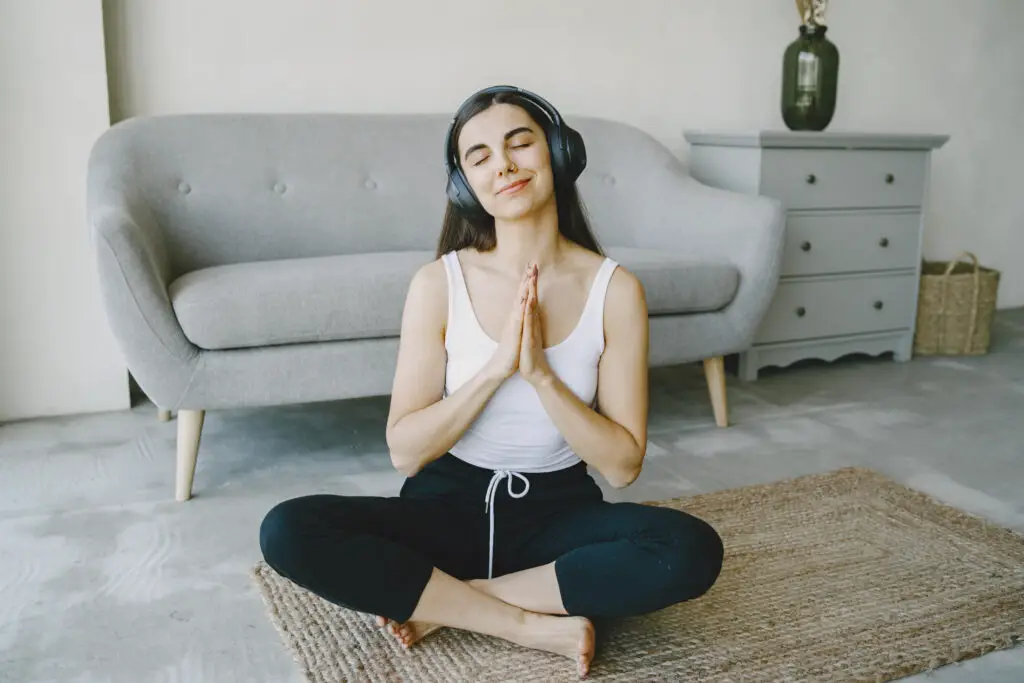
Meditation for Beginners: Top 11 Helpful Tips
Progressive Muscle Relaxation
Releasing Tension
Progressive muscle relaxation is a relaxation method that includes intentionally tensing and then subsequently releasing various muscle groups throughout the body. It’s an excellent way to release physical tension and promote relaxation. Here’s how to practice progressive muscle relaxation:
- Find a Comfortable Position: Sit or lie down in a quiet space, ensuring you’re comfortable.
- Begin with Toes: Start at your feet by curling your toes tightly for a few seconds, then release and relax. Be mindful of the difference between when your muscles are tense and when they are relaxed.
- Move Upward: Gradually work your way up through your body, tensing and relaxing each muscle group. Progress from your feet to your legs, abdomen, chest, arms, and neck.
- Breathe Mindfully: As you tense and relax each muscle group, focus on your breath. Inhale deeply as you tense the muscles, and exhale as you release the tension.
- Stay Present: Maintain your awareness on the sensations of tension and relaxation in each muscle group. If you notice any residual tension, release it with each exhale.
- Finish at the Head: Complete the progressive relaxation by focusing on the muscles in your face and scalp. Release any tension you may be holding in your facial muscles.
Progressive muscle relaxation is an effective way to reduce physical tension, making it easier to enter a meditative state. It’s also a valuable tool for managing stress and anxiety.
The Body-Scan Technique
The body-scan technique is a variation of progressive muscle relaxation that involves mentally scanning your body for areas of tension and consciously relaxing them. It’s a mindfulness practice that fosters self-awareness. Here’s how to do a body scan:
- Lie Down: Find a comfortable and quiet place to lie down on your back with your eyes closed.
- Begin at the Feet: Focus your attention on your toes and feet. Observe any sensations, tension, or discomfort you may feel in this specific area.
- Scan Upward: Gradually move your attention up through your body, paying close attention to each body part. Release any tension you encounter with each exhale.
- Observe Sensations: As you scan each body part, observe any sensations, warmth, or discomfort. Allow yourself to fully experience the present moment.
- Stay Present: Keep your awareness in the present moment as you scan your entire body, including your legs, abdomen, chest, arms, neck, and head.
- Finish at the Head: Complete the body scan by focusing on your head and facial muscles. Release any residual tension in these areas.
The body-scan technique is an excellent way to increase body awareness and promote relaxation. It can be used as a standalone practice or as a preparation for deeper meditation.

Meditation for Beginners: Top 11 Helpful Tips
Focus and Concentration
Candle Gazing
Candle gazing, also known as Trataka, is a concentration meditation technique that involves focusing your gaze on the flame of a candle. It can help improve concentration and calm the mind. Here’s how to practice candle gazing:
- Prepare the Space: Find a quiet room and set up a candle on a stable surface at eye level, about 2-3 feet away from you.
- Sit Comfortably: Assume a comfortable meditation posture, with your back straight and your hands resting on your lap.
- Light the Candle: Light the candle and allow it to burn steadily. Ensure that the room is dimly lit to enhance the visual focus on the flame.
- Gaze at the Flame: Direct your gaze to the flame of the candle. Focus all your attention on the flame and try not to blink excessively.
- Maintain Stillness: Keep your body and head as still as possible. Your only movement should be the natural blinking of your eyes.
- Observe Your Thoughts: As you continue to gaze at the flame, you may notice thoughts arising. Acknowledge them, but gently redirect your attention to the flame.
- Duration: Practice candle gazing for as long as you feel comfortable, gradually extending the duration with practice.
Candle gazing is an effective method for enhancing concentration and inner stillness. It’s especially beneficial for those seeking to quiet a restless mind.
Concentration on Sounds
Concentration on sounds is a meditation technique that involves focusing your attention on external sounds as a means of calming the mind. Here’s how to practice sound concentration meditation:
- Find a Quiet Location: Begin by finding a quiet space where you won’t be disturbed by loud or distracting noises.
- Sit Comfortably: Assume a comfortable meditation posture, either on a cushion, chair, or mat.
- Listen Actively: Close your eyes and start to listen actively to the sounds around you. Pay attention to both close and distant sounds.
- Non-Judgmental Awareness: As you listen, maintain a non-judgmental awareness of the sounds. Don’t label them as “good” or “bad.” They are simply sounds.
- Shift Focus: If your mind begins to wander or becomes distracted, gently bring your focus back to the sounds. Notice the qualities and nuances of each sound.
- Continue: Practice sound concentration meditation for the desired duration, gradually increasing the length of your sessions.
Sound concentration meditation is a practice that enhances your ability to stay present and attentive. It can be particularly useful for individuals who find it challenging to focus solely on their breath or visual objects.

Meditation for Beginners: Top 11 Helpful Tips
Dealing with Distractions
Acknowledging Distractions
Distractions are perfectly normal during meditation, particularly for those who are new to the practice. The key is not to eliminate distractions but to acknowledge and manage them skillfully. Here’s how to deal with distractions during meditation:
- Acceptance: Understand that distractions are normal and don’t signify failure in your meditation practice. Everyone experiences them.
- Labeling: When a distraction arises, label it without judgment. For example, if you’re thinking about what to have for dinner, mentally say, “Thinking.”
- Letting Go: After labeling the distraction, gently let it go and return your focus to your chosen point of concentration, whether it’s your breath, a mantra, or a visual object.
- Repeat as Needed: As other distractions arise, repeat the process of labeling and letting go. Be patient with yourself and avoid self-criticism.
Letting Go
Letting go is a fundamental aspect of meditation that goes beyond dealing with distractions. It involves releasing attachment to thoughts, emotions, and desires. Here’s how to cultivate the practice of letting go in meditation:
- Awareness: Start by becoming aware of your attachment to thoughts and emotions. Notice when you’re holding onto them tightly.
- Non-Identification: Recognize that you are not your thoughts or emotions. They are transient phenomena passing through your awareness.
- Surrender: Allow thoughts and emotions to come and go freely, without trying to control or change them. Imagine them as leaves floating down a river.
- Return to the Present: Whenever you notice attachment or clinging, gently return your focus to the present moment, whether it’s your breath or another point of concentration.
Letting go is a practice that deepens over time and can lead to profound inner peace and freedom. It allows you to experience thoughts and emotions without being ruled by them.
Meditation for Beginners: Top 11 Helpful Tips
Duration and Frequency
Start Slowly
When you’re new to meditation, it’s essential to start slowly and build your practice gradually. Here are some tips for getting started:
- Short Sessions: Begin with short meditation sessions, such as 5 to 10 minutes. This allows you to establish a routine without feeling overwhelmed.
- Consistency: Commit to meditating regularly, even if it’s for a short duration. What matters most is sticking to a regular practice rather than worrying about how long each session lasts.
- Increase Gradually: As you get more accustomed to meditation, slowly extend the length of your sessions. Aim for 20 to 30 minutes as a long-term goal.
- Listen to Your Body: Pay attention to how your body and mind respond to meditation. If you feel overwhelmed or restless, it’s okay to shorten your session.
Gradually Increase Duration
As you gain experience in meditation, you can extend the duration of your sessions. Here’s how to gradually increase the length of your meditation practice:
- Add Minutes: Every few days or weeks, add an extra minute or two to your meditation sessions.
- Set Goals: Set achievable goals for the length of your meditation practice. For example, aim to meditate for 15 minutes per day for a week before increasing to 20 minutes.
- Listen to Your Intuition: Pay attention to your intuition and how your body responds. If you feel ready to meditate for longer, do so. If not, continue at your current duration.
- Maintain Consistency: Even as you extend your meditation time, maintain consistency in your practice. Meditating daily is more valuable than occasional longer sessions.
Consistency is Key
Consistency is a vital element of successful meditation. Here’s why maintaining a regular meditation practice is essential:
- Neuroplasticity: Consistent meditation rewires the brain over time, making it easier to access a calm and focused state.
- Habit Formation: Regular practice helps establish meditation as a habit, making it a natural part of your daily routine.
- Progress Tracking: Consistency allows you to track your progress and experience the cumulative benefits of meditation.
- Stress Reduction: The stress-reducing effects of meditation are most pronounced with regular practice.
- Inner Transformation: Consistent meditation can lead to profound inner transformation and personal growth.
To experience the full benefits of meditation, commit to a regular practice, and make it a part of your daily life.
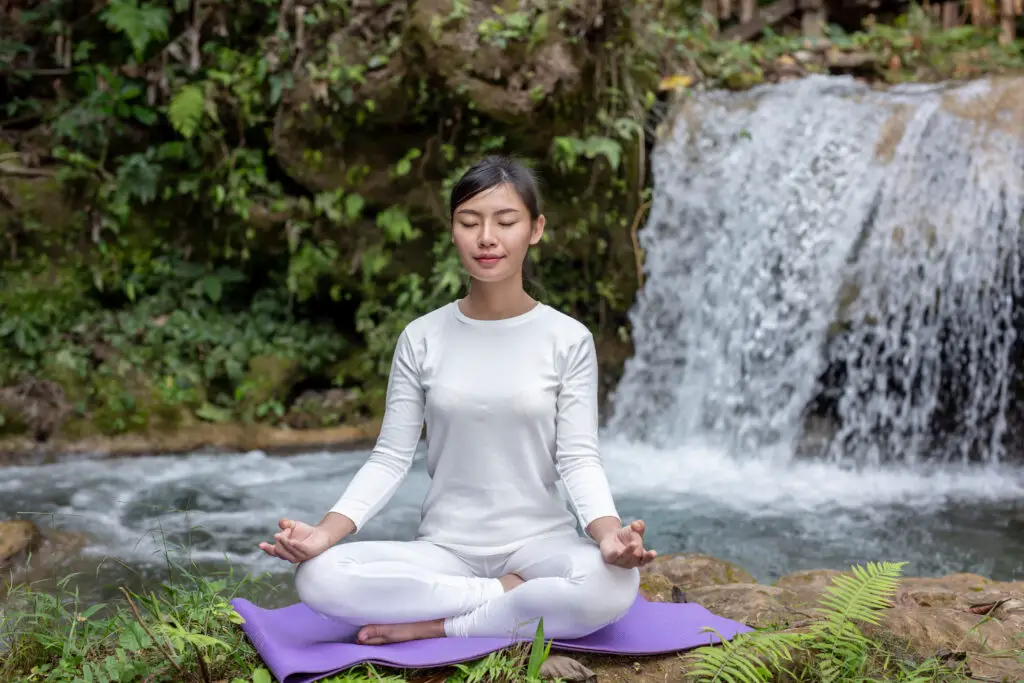
Meditation for Beginners: Top 11 Helpful Tips
Mind-Wandering and Acceptance
Understanding Mind-Wandering
Mind-wandering, or the tendency of the mind to drift and produce spontaneous thoughts, is a common experience during meditation, especially for beginners. It’s essential to understand and work with mind-wandering rather than resisting it. Here’s how:
- Normal Phenomenon: Know that mind-wandering is a normal aspect of human consciousness. It happens to everyone, even experienced meditators.
- Non-Judgmental Awareness: When your mind wanders, practice non-judgmental awareness. Instead of becoming frustrated, gently acknowledge the wandering and return to your point of focus.
- Opportunity for Insight: Mind-wandering can provide insight into your thought patterns, concerns, and aspirations. It’s an opportunity for self-reflection.
- Letting Go of Control: Understand that you cannot control the mind completely. Instead, you can learn to observe it with detachment.
Non-Judgmental Awareness
Non-judgmental awareness, often associated with mindfulness meditation, is a practice of observing your thoughts, emotions, and sensations without labeling them as good or bad. Here’s how to cultivate non-judgmental awareness:
- Observation: Begin by observing your thoughts and emotions as they arise during meditation. Instead of labeling them, simply notice them.
- Detached Observer: Imagine yourself as a detached observer of your thoughts, like a witness to the flow of a river.
- Letting Go of Labels: Avoid categorizing thoughts as positive or negative. They are temporary mental phenomena.
- Acceptance: Practice accepting whatever arises in your mind without judgment. This fosters an attitude of self-compassion.
- Return to the Present: Whenever you notice judgments or labels, gently redirect your focus to the present moment, whether it’s your breath or another point of concentration.
Non-judgmental awareness is a valuable skill that extends beyond meditation, promoting greater self-acceptance and emotional resilience in everyday life.
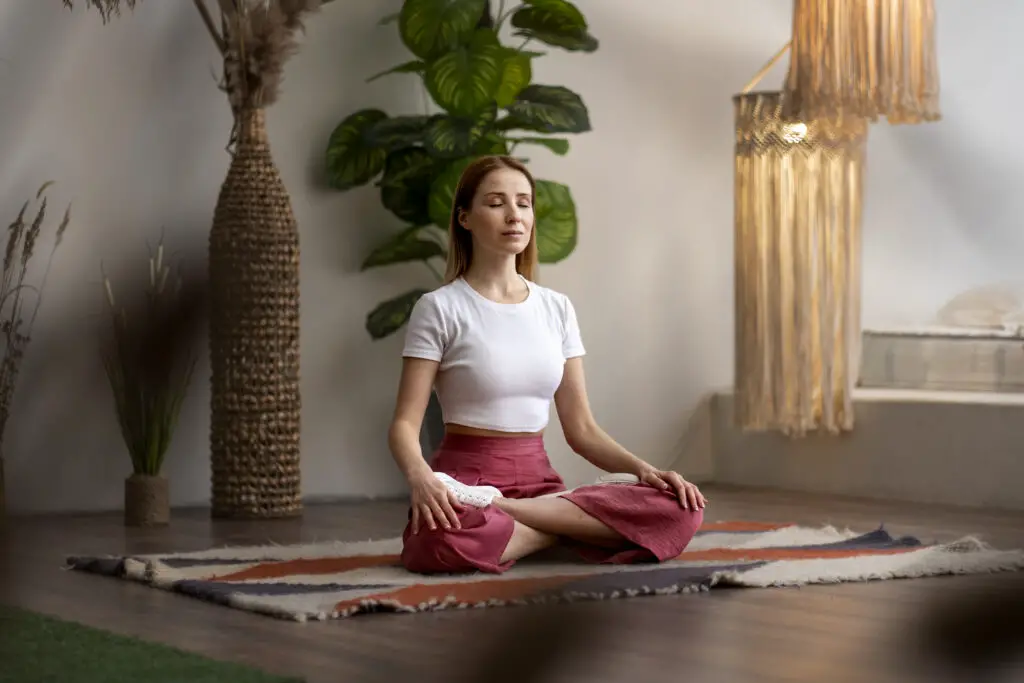
Meditation for Beginners: Top 11 Helpful Tips
Common Challenges for Beginners
Impatience
Impatience is a common challenge for beginners in meditation. It’s natural to want immediate results, but meditation is a gradual process. Here’s how to overcome impatience:
- Set Realistic Expectations: Understand that meditation is a skill that develops over time. Set realistic expectations for your progress.
- Focus on the Process: Instead of fixating on outcomes, focus on the process of meditation. Enjoy the journey and the moments of inner stillness.
- Short Sessions: If impatience arises, opt for shorter meditation sessions to avoid frustration.
- Mindfulness of Impatience: When you notice impatience during meditation, observe it without judgment. It, too, is a passing mental state.
Restlessness
Restlessness can manifest as physical fidgeting or a racing mind during meditation. It can be challenging, but there are strategies to manage it:
- Physical Comfort: Make sure you feel physically comfortable while meditating. Adjust your posture or seating arrangement as needed.
- Movement Meditation: Consider practicing movement-based meditation, such as walking meditation or yoga, to release restlessness.
- Mindful Movement: If you prefer seated meditation, incorporate mindfulness of your restlessness. Observe the sensations and impulses without acting on them.
- Gentle Breath: Focus on your breath as a way to calm restlessness. Slow, deep breaths can anchor your attention and reduce inner agitation.
Sleepiness
Feeling sleepy during meditation is a common challenge, especially if you meditate in the evening or when you’re fatigued. Here’s how to stay alert:
- Optimal Timing: If possible, meditate when you are naturally more alert. Morning sessions can be effective for avoiding sleepiness.
- Posture: Sit with your back straight and maintain good posture to prevent slouching, which can contribute to drowsiness.
- Eyes Open: Consider meditating with your eyes slightly open to increase alertness. Gaze at a spot on the floor a few feet in front of you.
- Cool Environment: Meditate in a room with good ventilation and a slightly cooler temperature to help stay awake.
- Short Break: If sleepiness persists, take a short break, stand up, and stretch before resuming your meditation.
Doubt
Doubt is a common mental obstacle in meditation, especially for beginners. It can take the form of questioning the effectiveness of your practice or whether you’re doing it correctly. Here’s how to address doubt:
- Trust the Process: Understand that doubt is a natural part of the meditation journey. Trust that the process will yield benefits over time.
- Seek Guidance: If you’re unsure about your meditation practice, seek guidance from experienced meditators or teachers.
- Consistent Practice: Doubt often dissipates with consistent practice and tangible benefits. Keep meditating regularly to build confidence in your practice.
- Non-Judgmental Awareness: When doubt arises during meditation, observe it without judgment. It, too, is a passing mental state.
- Self-Compassion: Be kind to yourself and practice self-compassion. Doubt is a common experience for all meditators, not just beginners.

Meditation for Beginners: Top 11 Helpful Tips
Maintaining a Meditation Journal
Tracking Progress
A meditation journal is a valuable tool for beginners to track their progress and insights gained during meditation. Here’s how to maintain a meditation journal effectively:
- Choose a Journal: Select a notebook or digital journal dedicated to your meditation practice.
- Record Sessions: After each meditation session, write down the date, duration, and any specific techniques or practices you used.
- Thoughts and Emotions: Note any thoughts, emotions, or physical sensations that arose during meditation. This can help you detect patterns over time.
- Challenges: Record any challenges or distractions you encountered and how you managed them.
- Progress: Document any insights, changes, or benefits you experience as your meditation practice deepens.
- Goals: Set and track meditation goals in your journal. For example, you might aim to meditate for a certain duration or achieve a specific level of focus.
Reflection and Growth
A meditation journal serves as a reflective tool for your inner journey. It allows you to:
- Track Progress: Reviewing your journal entries can help you see how your meditation practice evolves over time.
- Identify Patterns: You may notice recurring thoughts, emotions, or challenges that you can address more intentionally.
- Celebrate Success: Acknowledge your milestones and successes in your meditation practice.
- Adjust Techniques: If you notice that a particular technique or approach isn’t effective, you can make adjustments based on your journal reflections.
- Deepen Insights: Writing about your meditation experiences can deepen your understanding of yourself and your inner landscape.
Maintaining a meditation journal is a practice in self-awareness and self-discovery. It can enhance the benefits of meditation and keep you motivated on your journey.
Conclusion:
Meditation for Beginners: Top 11 Helpful Tips
A Transformative Journey
Meditation is a transformative journey that offers a wide range of benefits for beginners and experienced practitioners alike. By exploring various meditation techniques, such as mindfulness, guided meditation, mantra meditation, progressive muscle relaxation, and concentration practices, you can discover the methods that resonate most with you.
Remember that meditation is a skill that develops with consistent practice. Be patient with yourself, embrace challenges as opportunities for growth, and maintain a meditation journal to track your progress and insights.
As you continue on your meditation journey, you may find that it not only enhances your inner peace and well-being but also positively impacts various aspects of your life, including your relationships, stress management, and overall sense of clarity and purpose.
Incorporate meditation into your daily routine, start with short sessions, and gradually extend the duration as you become more comfortable. Whether you seek relaxation, stress reduction, improved focus, or spiritual growth, meditation has the potential to enrich your life in profound ways.
With dedication and an open heart, meditation can be a powerful tool for self-discovery and inner transformation. As you explore the depths of your own consciousness, may you find the peace, wisdom, and inner strength that reside within you.
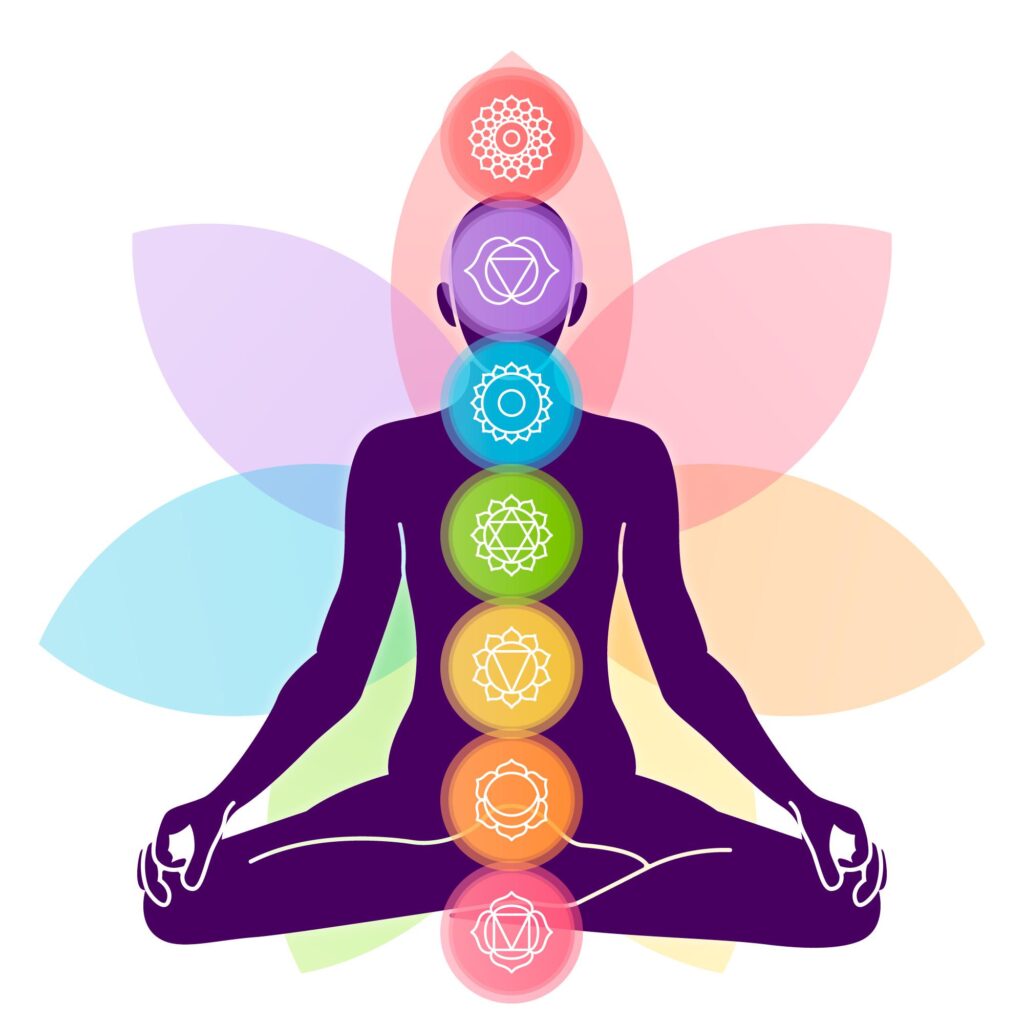
Frequently Asked Questions (FAQs):
Meditation for Beginners: Top 11 Helpful Tips
1. What is meditation, and why should I consider it as a beginner?
- Meditation is a practice that involves training your mind to focus, increase awareness, and achieve a state of mental clarity and relaxation. As a beginner, meditation can benefit you in various ways, including stress reduction, improved concentration, emotional balance, and enhanced overall well-being.
2. I’m new to meditation. Where should I start?
- A great starting point for beginners is mindfulness meditation. Meditation entails focusing on your breath and thoughts with an open and non-judgmental awareness. It’s simple, accessible, and provides a solid foundation for other meditation techniques.
3. How do I find the right meditation technique for me?
- Experiment with different meditation techniques to find the one that resonates most with you. Try mindfulness meditation, guided meditation, mantra meditation, or progressive muscle relaxation to see which one feels most comfortable and effective for your needs.
4. How long should I meditate as a beginner?
- To begin, try shorter meditation sessions, lasting about 5 to 10 minutes, and as you grow more at ease, you can progressively extend the length of your practice. What matters most is maintaining a regular practice rather than focusing solely on the duration of each session. Aim for daily practice.
5. I often get distracted during meditation. Is this normal?
- Yes, distractions are normal, especially for beginners. The key is not to eliminate distractions but to acknowledge and manage them skillfully. Redirect your focus to your chosen point of concentration, such as your breath, when distractions arise.
6. Can meditation help me manage stress and anxiety?
- Yes, meditation is an effective tool for managing stress and anxiety. It activates your body’s relaxation response, reduces the production of stress hormones, and promotes emotional well-being. Regular meditation can lead to long-term stress reduction.
7. Is it normal to feel restless or sleepy during meditation?
- Yes, it’s common to experience restlessness or sleepiness, especially when you’re new to meditation. Ensure you’re meditating in a comfortable posture, at an optimal time, and consider techniques like walking meditation to address restlessness.
8. How can I stay motivated to meditate regularly?
- Maintaining a meditation journal can help you stay motivated. Keep a record of your advancement, establish realistic objectives, and take time to acknowledge and celebrate your accomplishments. Reflect on the positive changes you experience in your life due to meditation.
9. Are there any meditation apps or online resources for beginners?
- Yes, there are several meditation apps and online resources designed for beginners. Popular options include Headspace, Calm, Insight Timer, and various guided meditation videos available on platforms like YouTube.
10. Can meditation lead to spiritual growth?
- Meditation can be a spiritual practice for those seeking inner growth and self-realization. It can deepen your connection with your inner self and the larger universe, fostering a sense of purpose and interconnectedness.
11. Is there a right or wrong way to meditate?
- There’s no one-size-fits-all approach to meditation, and there’s no right or wrong way to do it. The most important thing is to find a technique that suits you and to practice regularly with an open heart and mind.
12. How can I deal with self-doubt or skepticism about meditation?
- Doubt is a common experience for beginners. Trust the process, seek guidance when needed, and maintain a consistent practice. Over time, you may experience tangible benefits that help alleviate doubt.
13. Can meditation help with sleep problems?
- Yes, meditation can be effective for improving sleep quality and managing insomnia. Practices like progressive muscle relaxation and mindfulness meditation can calm the mind and promote better sleep.
14. What is the best time of day to meditate?
- The ideal time for meditation differs for each individual. Some prefer mornings to start their day with clarity and focus, while others find evenings help them unwind and relax. Choose a time that aligns with your natural rhythm and daily schedule.
15. Is meditation a religious practice?
- Meditation is not inherently religious, although it can be incorporated into religious or spiritual practices. Many people from various backgrounds practice meditation for its mental, emotional, and physical benefits.
Meditation for Beginners: Top 11 Helpful Tips
Remember that meditation is a personal journey, and what matters most is finding a practice that resonates with you and supports your well-being and growth.
